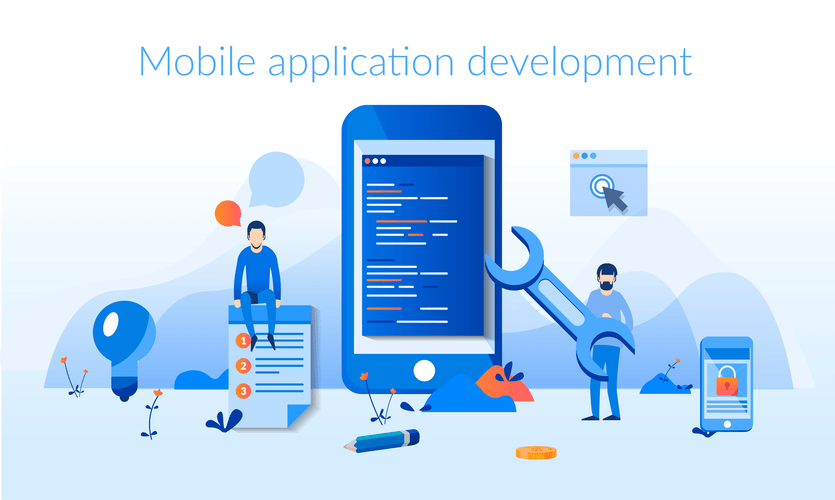No products in the cart.
Software development
Onion Architecture Used in Software Development DEV Community
This will be an Empty API Controller which will have Api Versioning enabled in the Attribute and also a MediatR object. We will not have to re-define the API Versioning route nor the Mediatr object. But we will just add the BaseAPI Controller as the base class. As mentioned earlier, the Core Layers will never depend on any other layer. Therefore what we do is that we create interfaces in the Application Layer and these interfaces get implemented in the external layers.

The Test project will have the tests and the MVC project will contain the MVC controllers and the view. Onion Architecture and Clean Architecture both are used to provide a standard architecture to the software. These architectures play a key role when we build large and complex projects which require regular enhancements.In this article, we will know about Onion architecture and Clean architecture in detail. Also, we will see a basic example of .Net Core-based application to understand onion and clean architecture.Before we proceed, we should understand what was the concern with prior architecture i.e.
What is Onion Architecture?
In the final analysis, therefore, the onion architecture is also almost identical to the hexagonal architecture – it differs only in the explicit “domain model” at the center of the application core. I just want to emphasize that the database is external. Some people are used to think applications where the center is a database running triggers, stored procedures or jobs. If you follow this Onion Architecture there are no possible database applications. Most of the applications might use a database as a storage service but only though some external infrastructure code that implements an interface that makes sense to the application core.

I like to learn, explore and understand but always taking into account the benefits of any new trend, principle or whatever. That’s the reason why I am not going to explain software architectures as a war, trying to convince you which one is the best and why you should use it alone. Instead, I am going to focus this on how to use different architectures in a combined way, trying to show the benefits of it and when I would use them. These are the steps we need to follow to create a MVC application following to onion architecture. We have created the controller along with the view using the scaffolding. At this point if we notice the web project, we will find BloodDonors controller and a BloodControllers subfolder in the view folder.
Part 2 — Code Structure & the DB Model
Just to make our solution a bit clean, let’s also add API Versioning to the WebAPI. With the CRUD logic out of the way, let’s set up EFCore in the Persistence Layer and try to generate a database. We will have to register Swager within the application service container. Navigate to ../Startup.cs and add these lines to the ConfigureServices method. The presentation layer is where you would Ideally want to put the Project that the User can Access. In N Layer Architecture, the Database is usually the Core of the Entire Application, i.e It is the only layer that doesn’t have to depend on anything else.

We are using a Web API built with ASP.NET Core to create a set of RESTful API endpoints for modifying the domain entities and allowing consumers to get back the data. As we can see, it consists of the Web project, which is our ASP.NET Core application, and six class libraries. The Domain project will hold the Domain layer implementation.
Global Exception Handling in ASP.NET Core – Ultimate Guide
Technically, this is where we add features for saving objects, meaning a database. In both cases, you would have to create a new version of your DAL. But how would you account for these two different layers https://www.globalcloudteam.com/ in your business layer? In layered architecture, the abstractions are in the DAL, so in order for the business layer to compile, it has to include a reference to the layer in which the abstractions exist.
- CodeGuru covers topics related to Microsoft-related software development, mobile development, database management, and web application programming.
- Because it depends on the layers below it in the hierarchy, it can only call the methods that are exposed by the lower layers.
- There are a lot of aspects to the Onion Architecture, and if we have a common term to describe this approach, we can communicate more effectively.
- But for most applications, it is usually easier to start with a simpler domain model, and only introduce complexity if it is required by the project.
- In this layer services interfaces are kept separate from their implementation for loose coupling and separation of concerns.
- This means that in the Domain layer, we are not concerning ourselves with infrastructure details such as the database or external services.
We started with the Domain layer, where we saw the definitions for our entities and repository interfaces and exceptions. We have connected all of our Onion architecture implementation layers, and our application is now ready for use. We are creating a project called Presentation and giving it a reference to the Microsoft.AspNetCore.Mvc.Core NuGet package so that it has access to the ControllerBase class. Then we can create our controllers inside this project.
Adding the Required Interfaces And Packages in Application Layer
It is irrelevant for the business logic which technical details might be behind these ports. By the way, this affects not only the database but any kind of infrastructure the application accesses. I have even encountered access to the Facebook Graph API from the presentation layer.
As I have already inserted one record in the database by using InserCustomer API we will see the data by executing Get ALL Customers API. We have now set our expectations for anyone wishing to charge a user for a transaction within our Application Services layer. However, we are not doing anything useful at the moment with the transaction so from this and following the layers of Onion Architecture we need to define our Domain Services layer. After Layered and Hexagonal architectures, the time has come to talk about their close cousin – the Onion Architecture initially introduced in a series of posts by Jeffrey Palermo. For every service, we will write the CRUD operation using our generic repository.
Build Microservices with .NET Core and RabbitMQ (Step-by-Step)
Great, we have seen how to implement the Presentation layer. Now, let’s look at some of the custom exceptions that we have inside the Exceptions folder. These are just some of the examples of what we could define in the Domain layer. We have to realize that everything is a tradeoff in software engineering. Conceptually, we can consider that the Infrastructure and Presentation layers are on the same level of the hierarchy.

A web application, a desktop application, or a mobile application can make up this layer. Using contracts allows each layer to set its expectations onto the next and couples it to only what it requires to be. Jeffrey Palermo himself provided an example of the Onion Architecture, so instead of playing around with Spring Pet Clinic again, let’s analyze his solution. In onion architecture the custom service folder, we will create the custom service class that inherits the ICustomService interface code of the custom service class is given below. Add the Data in the domain that is used to add the database context class. The database context class is used to maintain the session with the underlying database using which you can perform the CRUD operation.
Primary and Secondary Ports and Adapters
One outer layer which may surprise many is Infrastructure. Is the database we use or an external dependency not part of our domain model layer? Next, we looked at the Infrastructure layer, where the implementations of the repository interfaces are placed, as well as the EF database context. However, we are going to do something different from what you are normally used to when creating Web APIs.
